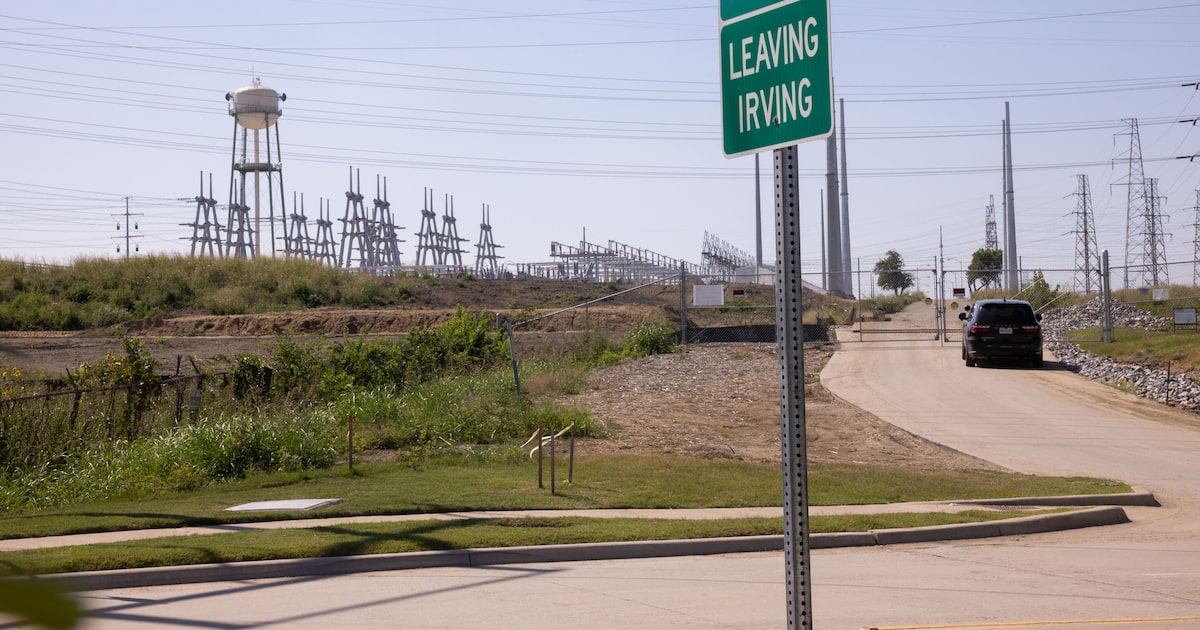Prasad Choppa was not expecting to win the fight against a 200-foot communications tower next to his neighborhood when he walked into Dallas City Hall on Wednesday.
Dozens of his neighbors from the South Haven community watched the Dallas City Council approve utility company Oncor’s request to construct the tower near their homes in Irving. Across the road, the tower would be situated in Dallas.
The approval boiled down to Oncor’s promise of creating buffer zones to shield the residents’ backyards from the tower and making its services reliable, a federal law restricting cities’ powers on communication towers and the fact the protesters weren’t Dallas residents.
“The way the discussion went. The way (council members) asked Oncor questions — it was predetermined,” Choppa said.
Political Points
South Haven residents asked Dallas officials to set minimum distance requirements and proposed the tower be 600 feet away. They thought it would be possible for the company to look somewhere else in an 80-acre area. They worried that a tower that close by could fall on transmission lines, impact the children’s park and also harm property values.
However, Oncor officials said the location near South Haven was the safest site as it provided 200-foot buffer zones on all sides. Last month, the Federal Aviation Authority approved Oncor’s request to build the tower in the area, approval needed because of the site’s proximity to DFW International Airport.
Council member Maxie Johnson was the sole person to vote against the measure. “I cannot support it because it’s close to the parks and the neighborhood where kids play,” he said, echoing his plan commissioner, Tom Forsyth.
Forsyth said he came to the council meeting Wednesday not as a plan commissioner, but as a private resident. In support of the South Haven neighborhood, Forsyth said the council could amend the development plan to “provide reasonable separation for the cell tower from the neighbors, their homes and their children’s park, which is adjacent to the Oncor facility.”
Other council members, with emotions ranging from compassion to resignation, said a 1996 telecommunications law could put Dallas in a sticky situation legally, and that the transmission lines were one of many urban realities that came from living on city limits.
“The reality is that we could make you feel good by saying that those reasons are enough for us to do something that is, quite frankly, illegal,” council member Adam Bazaldua said, adding that litigation, girded by federal law that supersedes local regulation, would still lead to a communication tower.
Oncor officials said they had three options. Two of them, according to the maps given to the City Council, were close to Cypress Waters and new single-family homes that will be built by Billingsley Company, a real estate firm founded by Lucy and Henry Billingsley, who are also related to real estate giant Hunt Realty.
Bill Walker, the senior vice president of development for the Billingsley Company, said the location makes sense on several levels. “We support this tower from a very simple, pragmatic view. We need the power in the area to maintain the area,” he said, adding that Cypress Waters paid millions of dollars in taxes to Dallas. “I hate to bring it up, but it’s just the reality. Having this power is important, and we do.”
Council members and plan commissioners have pointed to a federal law that prevents local government from impeding the construction of wireless infrastructure. The law, created “to promote competition and reduce regulation” to grow technologies, also asserts cities and counties can’t take into consideration the potential health effects of construction.
Local governments can regulate the distance between towering structures and residential areas by setting requirements.
